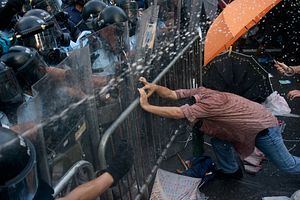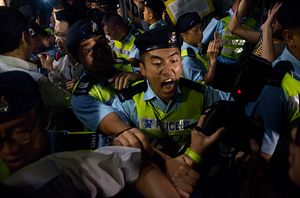The huge crowds may now be gone, but the repercussions will linger. A new era of civil disobedience in Hong Kong began four days after a student strike was officially declared on Monday, September 22. On that Friday, supporters of Occupy Central with Love and Peace movement took over and occupied government headquarters.
Unhappy at electoral restrictions imposed by Beijing, the protesters began an unprecedented occupation of Hong Kong Island and Kowloon in a bid to put pressure on the government by disrupting the city’s capabilities and commerce. The occupation eased to end this week, with the leaders agreeing to talks with the Hong Kong government.
Remaining remarkably peaceful throughout, protesters barricaded themselves into key touristic and economic areas. Armed with umbrellas for protection from pepper spray and the weather, the protesters earned a new name for the efforts: the Umbrella Revolution.
An overwhelmed police and government initially panicked in response to the massive crowds, deploying tear gas on Sunday, September 28. When that backfired, bringing more outraged citizens onto the streets, authorities shifted to a much more restrained approach. Still, protesters found themselves under attack from other groups, including local residents disgruntled at the disruptions.
Regardless of the immediate outcome, the protests marked Hong Kong’s political awakening, and a new constraint on Beijing’s ability to impose its will.










































